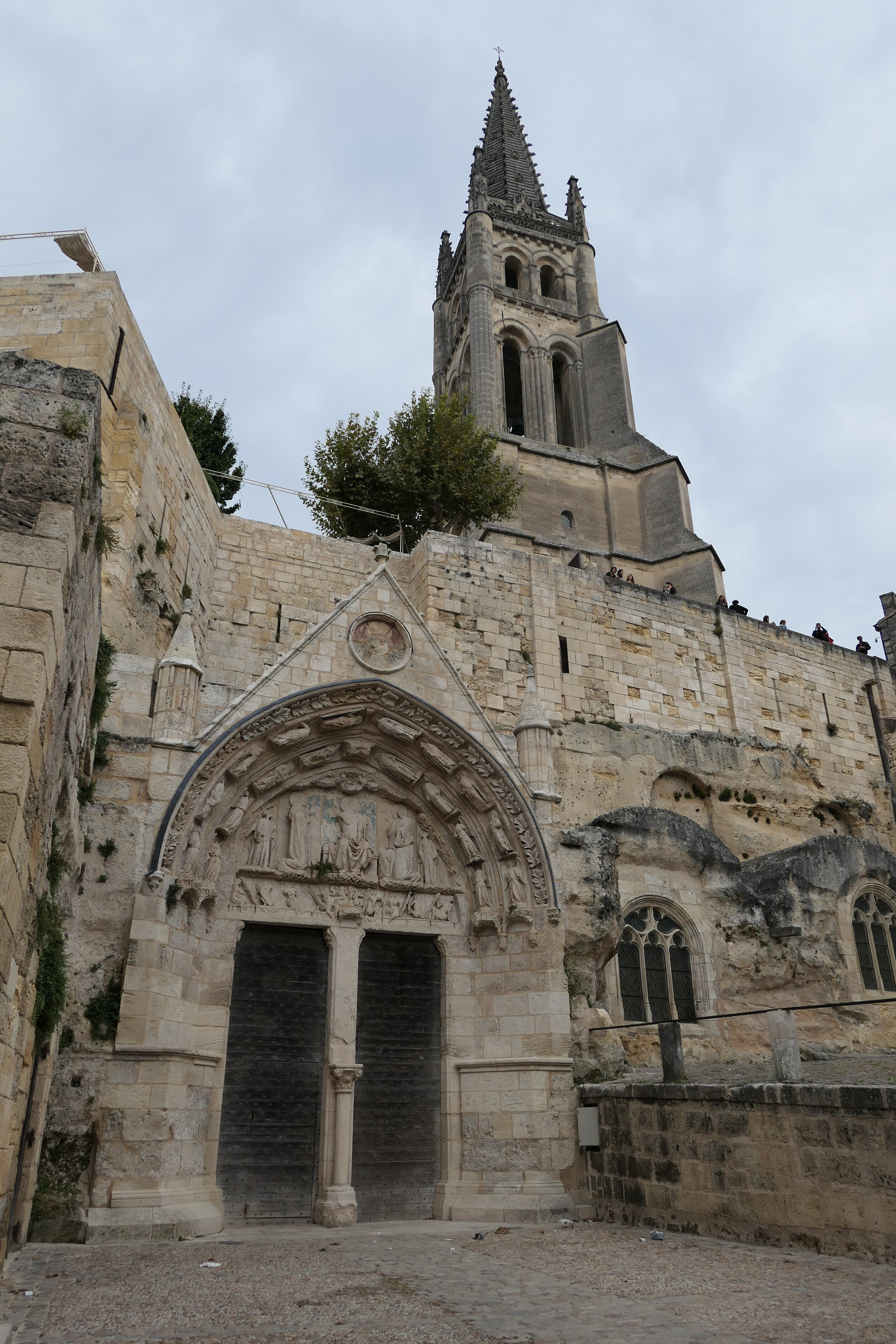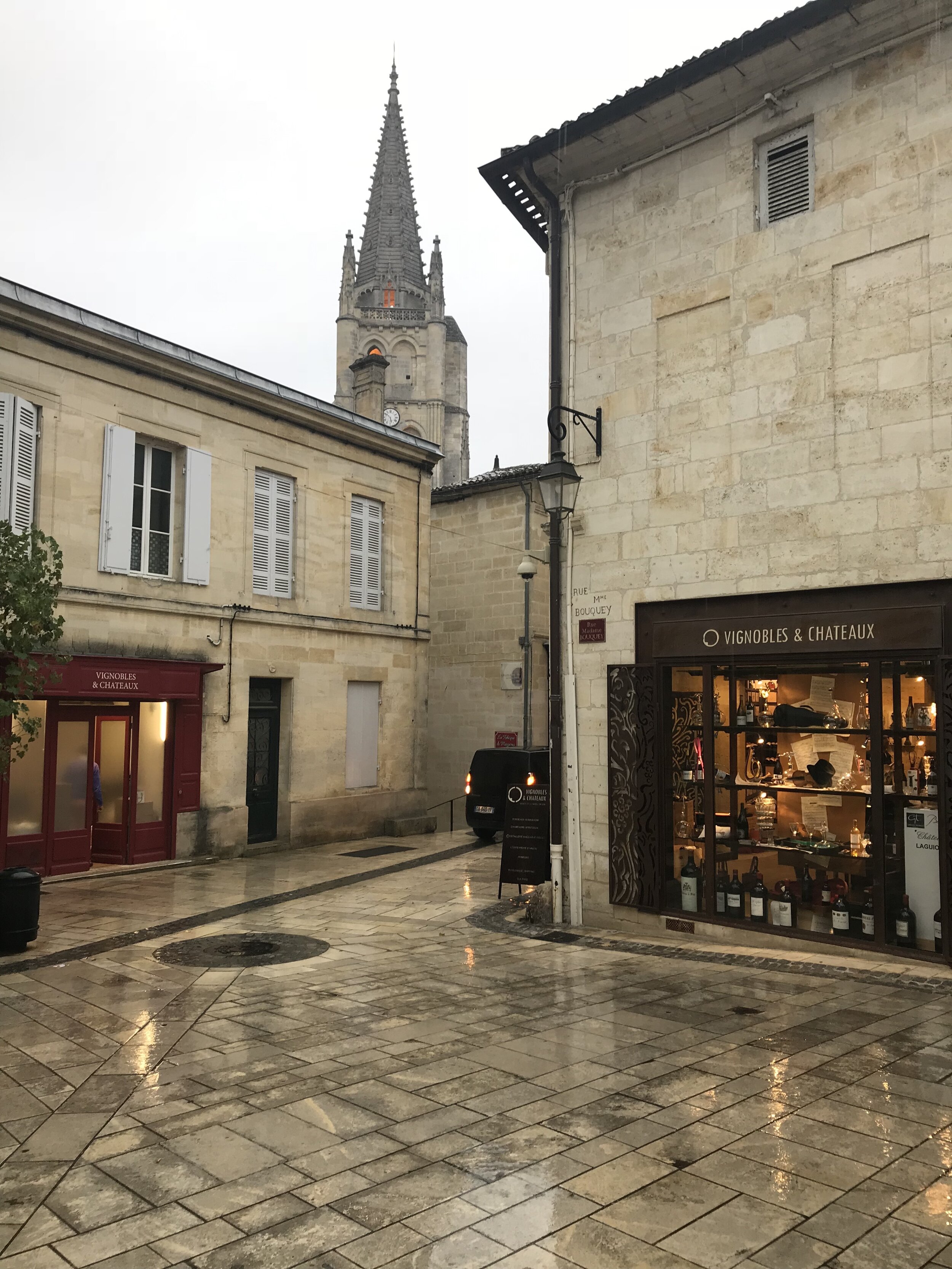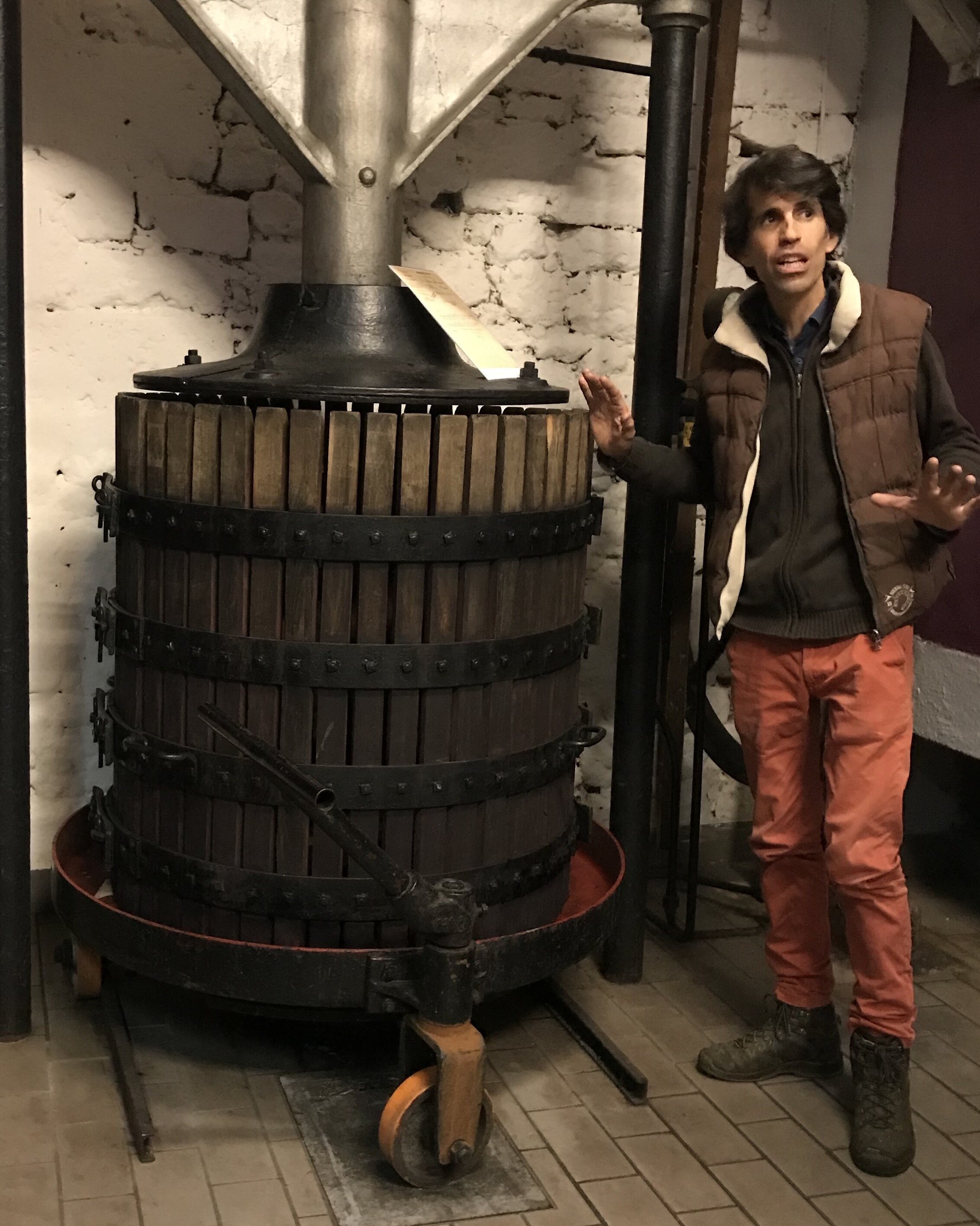During one of our annual visits to the Bordeaux region of France, we fell in love with the village of Saint-Émilion. Feeling felt that this village and its surrounding area warranted a deeper dive, we went back in October 2019 as Saint-Émilion celebrated 20 years as a UNESCO World Heritage Site.
Here, we cover our favorite Saint Émilion restaurants, St Émilion Hotels, off-the-beaten-path recommendations, and tips and tricks for getting the best Bordeaux. While some of the most expensive wine in the world is from this region, the number of small, independent producers still make it one of the few places to find great values, including some of the best red wine under $30 in the world.
First a little about KnowWines and this blog. We paid for all of our wines, visits, dinners, and tours on this trip. We are Amazon.com affiliates and we do receive a small commission if you purchase guides or maps through our affiliate links. The commissions we receive help us pay for web hosting fees, products to test and other costs associated with running this site - thanks for supporting our blog!
What is Saint-Émilion?
St Emilion, Saint Emilion, orSaint-Émilion? So many spellings for this unique place! It took us awhile as Americans to figure it all out!
Saint Émilion, the Person
In the 8th century, a Breton man left his home area of Vannes and wandered this region of France (before it was France) and came upon the Ascumbas area, which is where the village of Saint-Émilion is today. Looking for peace and prayer, he lived in a cave and was later joined by fellow Benedictine disciples. Later they carved a church out of a single piece of limestone, a site you can still visit today. After his death (late 8th century), the village was named in his honor. Since then, several different religious orders have inhabited the area, contributing to monastic life and religious architecture. In fact, some of the wineries touch the Santiago de Compostela pilgrim route.
Saint-Émilion Area and History
The village of Saint-Émilion is surrounded by 22 villages and communes, each with its own history and activities. It is located west and north of the city of Bordeaux, by about 40 kilometers (25 miles).
Saint-Émilion limestone has been mined for centuries, resulting in a labyrinth of caves. One can combine a cave visit and wine tasting at Châteaux Franc Mayne. This limestone, mined by hand and chisel, was used to build a number of monuments and walls. Many of the structures in the area were built for defensive fortifications, religious reasons, symbols of power, and later for aesthetic purposes.
The Libournais and Saint-Émilion Wine Region: Terrior, Soil, and Vineyards
This region has a unique microclimate due to its location between two rivers (the Dordogne and Isle rivers), the abundant presence of limestone, rolling hills, natural springs, and soils comprised of limestone, iron-rich clays, gravels, and sand. Its close proximity to the Atlantic ocean and all the rivers in the area keep the temperatures fairly constant and moderate.
Merlot and Cabernet Franc grow well in this region. And where the soils are a little warmer, vignerons will plant Cabernet Sauvignon as well.
When perusing wines at Saint-Émilion bottle shops, you will find an array of wines from one of ten Libournais regional AOCs as well as other, less restrictive AOCs in the region. These are Fronsac, Canon-Fronsac, Pomerol, Lalande de Pomerol, Saint-Emilion, Saint-Emilion Grand Cru, Saint-Georges-Saint-Emilion, Lussac-Saint-Emilion, Montagne-Saint-Emilion, and Puisseguin-Saint-Emilion.
(An AOC, or Appellation d’Origine Contrôlée, s a system in France to clearly define the area of origin from which a specifically labeled appellation product like wine can be created and labeled under specific production methodology.)
What we found unique in this area is that grapevines were growing on all different aspects (meaning that vines faced north, south, east, and west). In many of the world’s grape growing regions, the vines might just face south or southeast or southwest. These viticulture practices, as well as highly variable soils, mean there is a lot of diversity of expression of Merlot and Cabernet Franc and there are lovely blends of these two wines to explore in the glass.
If you want to learn more about the Saint-Émilion wine classification system, the folks over at Wine Cellar Insider have a good resource on this topic including the current Châteaux classifications.
What to Do in Saint-Émilion
Travelers and religious pilgrims have flocked to Saint-Émilion for centuries to view the rolling hills, valleys and plateaus, natural water springs, caves, medieval limestone churches and chateaux, and yes, to enjoy the wine.
Today’s travelers will find the following sights and activities in the greater Saint-Émilion area : medieval monastic limestone ruins, limestone buildings reflecting over eight centuries of architecture, Roman ruins, grape growing and wine production, fine wine tasting and bottle shops, fine dining and gastronomic delights like macaroons and lampreys (scary looking but tasty aquatic animals), fishing, hiking in rolling hills, driving on winding roads, and pockets of forest.
When to Go to Saint-Émilion
Late March through November are peak times for visiting Saint-Émilion. Many shops, inns, and restaurants close in January and February, or are only open on the winter weekends to attend to weekend-trippers.
How to Get to Saint-Émilion
How to Get to Saint-Émilion from Paris
This rural wine region is fairly easy to get to, especially from CDG Airport in Paris. One can fly on Air France several times per day from CDG to BOD or take the train from CDG Airport to the Bordeaux St-Jean train station.
How to Get to Saint-Émilion from Bordeaux
From BOD airport, you can take a taxi or Uber to Saint-Émilion. You could also take a bus, taxi, or Uber from BOD to St-Jean train station.
From the St. Jean train station, you can take a regional train to the edge of Saint-Émilion and walk up the hill 1.5 km to your hotel or Airbnb. Have luggage? Contact the Tourism Office, which is open every day of the year except Christmas o arrange a taxi or Tuk-Tuk to ferry you to your hotel or room.
If the regional train is not running that day (construction, strike, etc.) you can take an Uber from the train station to Saint-Émilion. To make yourself easy to find, order your ride near one of the small hotels across the street from the train station. Last, you can rent a car online or over the phone from the Bordeaux airport or at the St-Jean train station.
Parking in St Émilion
While there is not a lot of parking available in Saint-Émilion, there are spaces around the churches and near Place Bouqueyre in the lower part of the village. As we visited in October, we had no difficulty finding angled parking west of the Tourisme Office for the cost of about 2€ per hour. Those seeking free parking or parking an RV will need to park outside the village - this is also where free parking is available.
What to Wear in St Émilion
It is a pre-requisite to wear very sturdy shoes. Also, you will often see people in dark jeans or dark slacks, raincoat or jacket, scarf, dress shirt. In the evening you might see dresses with low-heeled shoes (cobblestones, steep streets).
When visiting vineyards, go business casual with hiking boots, walking shoes, or dressy but sturdy boots.
We did see a few people more dressed up, usually on their way to weddings or celebrations, or fine dining at the two-Michelin star Hostellerie de Plaisance.
What You Won’t Find in St Émilion
Saint-Émilion has a population between 2,000 and 3,000 people, and the surrounding villages and communes in the area are fairly small as well. You will not find any of the following in this village:
Fast food chains
Retail shopping
Nightlife after 9 pm
Close parking during the summer and around harvest
Where to Eat in Saint-Émilion
Each time we’ve been to Saint-Émilion, we’ve made the time and budget for lunch at Hostellerie de Plaisance. Here, one can choose menu items a la carte, go for a three-course menu that is choice of the chef, or take a longer multi-course menu. Plan two to three hours minimum for this experience.
If you want something more casual, a little cozier, and have one to two hours for lunch or dinner, try L'Envers du Décor.
For those wanting views of vineyards in nearby Pomerol, the Terrasse Rouge Brasserie Restaurant was lively and modern.
Those looking for a romantic, quintessential, small village dining experience with fireplace and exposed limestone walls might try Réserve de Presbytère, an excellent value for the money.
In the village, you can find a small grocery store selling fresh fruits, bread, French cheeses, snacks, and milk. Next door is a butchery selling fresh cuts of meat and a variety of charcuterie.
Where to Stay Near St Émilion
There are a number of hotels, inns, and rooms available in Saint-Émilion which are great for one or two nights in the village. For those wanting to stay near vineyards and away from the village, or who wish to take a longer look at the entire Libournais region, look east to the region of Castillon.
We enjoyed our stay at Chȃteau du Palanquey in nearby Sainte-Colombe. This recently opened five-room establishment is run by a family and features a wine cellar, spa, spacious parking, vineyard views, and contemporary yet cozy rooms. Throughout the Chȃteau (formerly a winery) there are various nooks for reading, playing billiards, or enjoying wine and snacks by the fireplace. Outside you can walk around the grounds or take a stroll on gravel roads through the vineyards. Gracious hosts Melanie and Laurent will also help you with restaurant reservations, wine visits, and drive recommendations, and will also offer you breakfast, lunch, or dinner with 24 hour notice. One can also purchase wines from their cellar to enjoy.
Wine Tasting in St Émilion
After visiting for three years, our favorite wine shops for tasting and making purchases are ETS Martin and Vignoble and Chateaux. Both offer shipping to the United States. I’ve used both for shipping and have had better luck with ETS Martin. We’ve always received our shipments in North Carolina within 5-7 business days.
When tasting at any of the bottle shops, be aware that some wines are only available to purchase in the region, while other wines are imported to the United States and can be purchased stateside at a lower cost. We chose to purchase wines at these establishments that can only be obtained in the region or older vintages that are very expensive here in the States.
If you prefer not to ship, and simply want to purchase a couple of bottles from bottle shops or a winery, check out our article on how to fly with wine if you purchase wine from the vineyard and want to carry it back with you.
Wine Touring and Tasting in St Émilion
A few short years ago, not many wine estates were open for tasting and tours. Today over 130 wine estates are open to the public! Wine tour operators in many wine regions are little more than drivers shuttling drinkers between chȃteaus. Upon arriving at chȃteau, the host may be the winemaker or an intern or family member tasked with guiding tourists through a facility.
To increase the odds that you have a good experience, we recommend knowledgeable tour guides who have years of experience in several areas of the wine industry to connect you to real winemakers and small, independent producers like Chȃteau Guadet.
Alternatively, if a guide is not in your budget, we highly recommend the Bordeaux Right Bank guide. This is an excellent resource with one-pagers on many chȃteau in the region, and includes the relative quality of the wines, history of the chȃteau, whether or not you can buy wine, and if they accept visitors. This guide can also come in handy for when you are shopping at bottle shops in the area or back at home.
Have you been to Saint-Émilion? Did you have a favorite wine, restaurant, hotel, tour, or experience? Please, let us know in the comments below! And if you are looking for more travel tips, drop us a line at jolene@knowwines.com.
Cheers!







